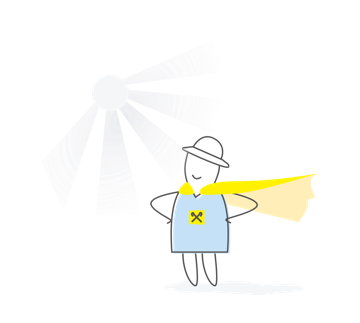Microgreen: big earnings on small sprouts
Few people had heard about microgreen as a line of business a couple of years ago, and even among consumers there was poor recognition. Today in Ukraine it is one of the most profitable niches.
Sprouted vegetable seeds, or microgreen, have already begun to appear in Ukrainian supermarkets, as well as in markets. Now it is not only specialized health food stores or vegetarian outlets. The growth in demand for sprouts is directly related to the mass transition of the population, especially young people, to a healthy diet. Microgreen is rich in vitamins and minerals, which are 20 times more than in ordinary vegetables. It is also very useful for digestion and blood with an extremely low calorie product. It is often used in dishes as a decor or base.
The main plus as a business is quick profit with minimal costs for production and time. Greens in the stage of the first two leaves already on the 5-10th day after germination is ready for sale. The price of the product is also high - 100 g are sold at 35-60 UAH, or 60 thousand UAH per centner. The main distribution channels are restaurants, supermarkets, less often for private use.
Microgrin holds 4 to 40 times more nutrients than a mature plant. At the same time, the implementation time is up to 2 days, the product is perishable.
It is important not to confuse microgreen with steams and already ripening plants, since the former has a central trunk, cotyledonous and young leaves. Everything else is a different product. Due to the fact that seed germination requires only lighting and timely watering, this type of business can be placed in almost any room.
The most popular on the microgreen market today are sprouts of arugula, alfalfa, amaranth, fennel, rye, radish, beetroot, carrot, clover, mustard, onion, pea, cabbage, radish and chickpea. Watercress, basil, cilantro, coriander microgreens, which have a specific and recognizable taste, are also widely popular. And seedlings of wheat, peas, sunflower today have become one of the basic components of popular soups, salads and even baking. That is, the assortment of these plants is quite wide and interesting.
Technology without surplus
There is no special technology for growing microgreen. But if you do not adhere to a few basic rules, the seeds may not sprout or the sprouts may deteriorate. After a couple of days in the dark, the sprouts need a lot of light, a constant average temperature and very good air circulation. To grow microgreen, you need a special substrate that perfectly retains moisture.
Miniature greens are grown in special conditions. Most often in boxes - containers with a special thermal and light regime, humidity level and ventilation. On gravel, in coconut substrate or peat instead of plain earth.
The most important thing here is to pick the right seeds to sprout. There are three ways to germinate microgreen. For large seeds such as peas and sunflowers, ordinary cans are best suited. Seeds are washed, placed on the bottom of the can and filled with water, after which they are left to swell in a cool dark place overnight. The top of the jar is covered with gauze and periodically moistened and washed. The main thing here is to maintain a water balance. For greater convenience and accelerate the process of seed germination, the jar is laid on its side, so more space is freed up.
The second way is sprouting on cotton. The principle is similar, the only difference is that cotton is added to the bottom of the can or box. This method is suitable for small seeds and allows you to retain moisture longer.
The third is in the soil or substrate. Seeds fall asleep on top of a soil layer of 4-5 cm, while constantly irrigating. The disadvantage of this method is the possible hit of particles of the earth on the stems.
After cutting, the microgreen is ready for use. The products are stored when cooled to 5-7 days. Despite the fact that the product is perishable, there is a demand for it all year round.
The cost of such a business varies depending on the equipment of $ 4-5 thousand. Payback is achieved in about 2 months.
First already gone
So far, Ukraine has no microgreen as an organized area, in contrast to Europe and North America, where vegetables and greens are germinated on an industrial scale. All that is produced in Ukraine today is startups and small businesses. Ukrainian manufacturers say that the main barrier is the poor recognition of microgreen. However, in the near future the market will only grow.
The direction is actively developing, and new players appear on the market. The first Ukrainian vertical farm “Happiness of Health” is located in Kiev. The main direction is the cultivation of salads and herbs. At the same time, the farm also produces microgreen. But the volume of production is small, rather it is upsales. “We added microgreen because there is demand, and it is very simple in technological production and investment cheap. Therefore, this environment will be highly competitive over time, and the margin that exists now is temporary. All the same, we focus on growing on greens, ”says Maxim Kirichek, the owner of the farm. The farm uses Dutch seeds, which are grown on mineral wool.
In Odessa, the owner of the Portia Health company, Ivan Vorobyov, grows microgreens for the needs of retail and HoReCA. According to him, the initial investment was small and paid off in a couple of months. The most expensive thing in arranging is to find quality seeds that will be easy to germinate and produce a quality crop. “Sunflower seeds cost 15-16 UAH / kg. From 300 g of seeds, you can get 500 g of microgreens, which has a retail price of 300 UAH / kg, ”says Vorobyov.
“The disadvantage of this product is its poor recognition, it was necessary to demonstrate the possibility of using microgreen in cooking. In March 2017, with the money of investors, I opened my greenhouse for growing micro-greens, ”says the entrepreneur. For cultivation use the hydroponics method, without any growth stimulants and fertilizers.
He notes that they started small - sprouting sunflower, alfalfa, peas and radishes. Today, the company's assortment includes not only microgreens, but also seeds, substrates, dried sprouts and even edible flowers. There are already 20 types of plants in the assortment, and in the future - to provide consulting services for growing microgreen. Moreover, the more complex the culture, the higher its price per 100 grams. There are also special orders, for example, onion sprouts cost 700 UAH / kg.
Another small microgreen business is in Kharkov. Elena Zykina changed the IT sphere to her own Urban Farm. “It all started because there were no shops near my house where you could buy fresh herbs. So one day I decided to try to germinate the seeds myself. A week later they sprouted from me, and I realized that I want to do this, ”says Elena. According to her, access to fresh herbs is the main advantage of the enterprise. The farm is currently growing atypical herbs such as nasturtium, borago and amaranth. Plants at Urban Farm are grown using hydroponics, LED lighting and automated watering.
There is also Green Farm in the Dnieper, which is engaged in microgreen and uses Dutch technology for 1.2 thousand square meters in production. m. The advantage of this company is that they provide delivery, including to all regions of the country. Another company - MikroGrіn - also germinates microgreen with very affordable prices. In assortment more than 14 positions.
ZelenaFerma provides a complete set that allows you to independently grow microgreen. There are seeds, coconut substrates, linen mats and the necessary drainage.















